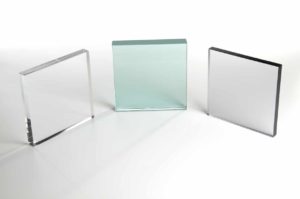When purchasing ballistic protection systems for your building, you have a few different materials to consider. Bullet resistant acrylic is one of the most popular options available. While no material is truly “bullet proof,” acrylic does provide some protection against specific types of ballistic threats.
Since there are a handful of different bullet resistant materials available, it’s important to understand what each one brings to the table before making a decision. Here’s a quick explanation of some of the pros, cons, and other characteristics of bullet resistant acrylic to help you determine whether this protective glazing material is the right choice for your particular building.
About Bullet Resistant Acrylic
Acrylic is a type of synthetic resin made from polymers. Bullet resistant acrylic comes in a few different varieties, depending on the level of ballistic protection you require.
If you only need to meet UL level 1 or UL level 2 standards, it can be a monolithic sheet, which means it comes in just a single piece of material. For UL level 3, it comes as multiple layers of acrylic material that are laminated together.
Pros of Bullet Resistant Acrylic
Since acrylic is a type of plastic, it is fairly lightweight. This means that it is easy to fabricate and install, making it one of the more affordable options available on the market. It also offers water-like clarity, so it’s perfect for transaction windows or areas that you want to get a lot of natural light. Additionally, acrylic includes UV inhibitors that prevent yellowing, and can be coated with an abrasion resistant material to protect against scratching. You also have the option of flame polishing the edges of an acrylic material, which can lead to a very crisp and seamless appearance in custom made systems.
Cons of Bullet Resistant Acrylic
Though acrylic offers many practical benefits, it doesn’t offer the highest levels of ballistic protection. It is only available in the lower levels of UL’s ratings system, levels 1-3. So if you require protection from ballistic threats not covered under those lower levels, it’s best to go with another material. It’s also fairly thick, even within just those lower levels; a sheet that meets UL level 1 standards measures about 1 ¼” thick.
In addition, compared to polycarbonate, acrylic is a more rigid material and less pliable . So when it is impacted by a bullet, it can shatter and allow the bullet to ricochet. Finally, it’s not as durable as glass and it can scratch, although there are some scratch resistant coatings available.
If you want to learn more about bullet resistant acrylic systems, contact Insulgard today. We offer a variety of acrylic protective options, along with other materials like polycarbonate, laminated glass, and glass-clad polycarbonate. Our team can help you gain a better understanding of each of these materials, so you can find the options that are best suited to your particular needs and create a custom system that will provide the exact level of protection your building needs.


